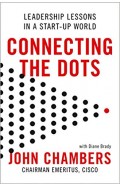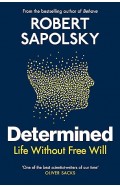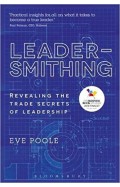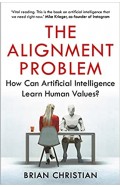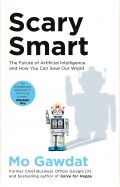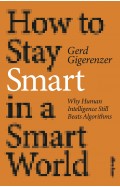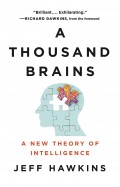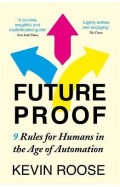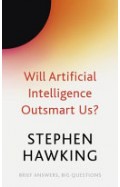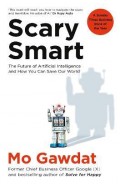- Home
- Books
- Categories
- Non Fiction
- Innovation and Technology
- Artificial Intelligence
- A Brief History of Intelligence - Why the Evolution of the Brain Holds the Key to the Future of AI
A Brief History of Intelligence - Why the Evolution of the Brain Holds the Key to the Future of AI
By: Max Bennett
-
Rs 3,145.50
- Rs 3,495.00
- 10%
You save Rs 349.50.
Due to constant currency fluctuation, prices are subject to change with or without notice.
A Brief History of Intelligence bridges the gap between AI and neuroscience by telling the evolutionary story of how the brain came to be.
The entirety of the human brain’s 4-billion-year story can be summarised as the culmination of five evolutionary breakthroughs, starting from the very first brains, all the way to the modern human brains. Each breakthrough emerged from new sets of brain modifications, and equipped animals with a new suite of intellectual faculties.
These five breakthroughs are the organising map to this book, and they make up our itinerary for our adventure back in time. Each breakthrough also has fascinating corollaries to breakthroughs in AI. Indeed, there will be plenty of such surprises along the way. For instance: the innovation that enabled AI to beat humans in the game of Go – temporal difference reinforcement learning – was an innovation discovered by our fish ancestors over 500 million years ago. The solutions to many of the current mysteries in AI – such as ‘common sense’ – can be found in the tiny brain of a mouse. Where do emotions come from? Research suggests that they may have arisen simply as a solution to navigation in ancient worm brains. Unravelling this evolutionary story will reveal the hidden features of human intelligence and with them, just how your mind came to be.
A Brief History of Intelligence bridges the gap between AI and neuroscience by telling the evolutionary story of how the brain came to be.
The entirety of the human brain’s 4-billion-year story can be summarised as the culmination of five evolutionary breakthroughs, starting from the very first brains, all the way to the modern human brains. Each breakthrough emerged from new sets of brain modifications, and equipped animals with a new suite of intellectual faculties.
These five breakthroughs are the organising map to this book, and they make up our itinerary for our adventure back in time. Each breakthrough also has fascinating corollaries to breakthroughs in AI. Indeed, there will be plenty of such surprises along the way. For instance: the innovation that enabled AI to beat humans in the game of Go – temporal difference reinforcement learning – was an innovation discovered by our fish ancestors over 500 million years ago. The solutions to many of the current mysteries in AI – such as ‘common sense’ – can be found in the tiny brain of a mouse. Where do emotions come from? Research suggests that they may have arisen simply as a solution to navigation in ancient worm brains. Unravelling this evolutionary story will reveal the hidden features of human intelligence and with them, just how your mind came to be.
A Brief History of Intelligence - Why the Evolution of the Brain Holds the Key to the Future of AI
By: Max Bennett
Rs 3,145.50 Rs 3,495.00 Ex Tax :Rs 3,145.50
A Brief History of Intelligence - Why the Evolution of the Brain Holds the Key to the Future of AI
By: Max Bennett
Rs 2,245.50 Rs 2,495.00 Ex Tax :Rs 2,245.50
Zubin Mehta: A Musical Journey (An Authorized Biography)
By: VOID - Bakhtiar K. Dadabhoy
Rs 892.50 Rs 1,050.00 Ex Tax :Rs 892.50
Platonic - How to Make and Keep Friends As an Adult
By: Marisa G. Franco
Rs 2,545.75 Rs 2,995.00 Ex Tax :Rs 2,545.75
Connecting the Dots: Leadership Lessons in a Start-up World
By: John Chambers
Rs 1,440.75 Rs 1,695.00 Ex Tax :Rs 1,440.75
Determined - The Science of Life Without Free Will
By: Robert M. Sapolsky
Rs 3,595.50 Rs 3,995.00 Ex Tax :Rs 3,595.50
Leadersmithing: Revealing the Trade Secrets of Leadership
By: Eve Poole
Rs 1,947.50 Rs 3,895.00 Ex Tax :Rs 1,947.50
Genius Makers : The Mavericks Who Brought A.I. to Google, Facebook, and the World
By: Cade Metz
Rs 3,145.50 Rs 3,495.00 Ex Tax :Rs 3,145.50
The Alignment Problem - How Can Machines Learn Human Values?
By: Brian Christian
Rs 2,065.50 Rs 2,295.00 Ex Tax :Rs 2,065.50
Scary Smart: The Future of Artificial Intelligence and How You Can Save Our World
By: Mo Gawdat
Rs 3,415.50 Rs 3,795.00 Ex Tax :Rs 3,415.50
System Error : Where Big Tech Went Wrong and How We Can Reboot
By: Rob Reich
Rs 1,947.50 Rs 3,895.00 Ex Tax :Rs 1,947.50
How to Stay Smart in a Smart World: Why Human Intelligence Still Beats Algorithms
By: Gerd Gigerenzer
Rs 2,797.50 Rs 5,595.00 Ex Tax :Rs 2,797.50
A Thousand Brains - A New Theory of Intelligence
By: Jeff Hawkins
Rs 4,497.50 Rs 8,995.00 Ex Tax :Rs 4,497.50
Futureproof - 9 Rules for Humans in the Age of Automation
By: Kevin Roose
Rs 1,525.50 Rs 1,695.00 Ex Tax :Rs 1,525.50
Will Artificial Intelligence Outsmart Us?
By: Stephen Hawking
Rs 1,255.50 Rs 1,395.00 Ex Tax :Rs 1,255.50
Scary Smart : The Future of Artificial Intelligence and How You Can Save Our World
By: Mo Gawdat
Rs 2,515.50 Rs 2,795.00 Ex Tax :Rs 2,515.50
Platonic - How to Make and Keep Friends As an Adult
By: Marisa G. Franco
Rs 2,545.75 Rs 2,995.00 Ex Tax :Rs 2,545.75
Connecting the Dots: Leadership Lessons in a Start-up World
By: John Chambers
Rs 1,440.75 Rs 1,695.00 Ex Tax :Rs 1,440.75
Determined - The Science of Life Without Free Will
By: Robert M. Sapolsky
Rs 3,595.50 Rs 3,995.00 Ex Tax :Rs 3,595.50
Leadersmithing: Revealing the Trade Secrets of Leadership
By: Eve Poole
Rs 1,947.50 Rs 3,895.00 Ex Tax :Rs 1,947.50
No recently viewed books available at the moment.
Zubin Mehta: A Musical Journey (An Authorized Biography)
By: VOID - Bakhtiar K. Dadabhoy
Rs 892.50 Rs 1,050.00 Ex Tax :Rs 892.50
A Brief History of Intelligence - Why the Evolution of the Brain Holds the Key to the Future of AI
By: Max Bennett
Rs 3,145.50 Rs 3,495.00 Ex Tax :Rs 3,145.50
A Brief History of Intelligence - Why the Evolution of the Brain Holds the Key to the Future of AI
By: Max Bennett
Rs 2,245.50 Rs 2,495.00 Ex Tax :Rs 2,245.50
Platonic - How to Make and Keep Friends As an Adult
By: Marisa G. Franco
Rs 2,545.75 Rs 2,995.00 Ex Tax :Rs 2,545.75
Connecting the Dots: Leadership Lessons in a Start-up World
By: John Chambers
Rs 1,440.75 Rs 1,695.00 Ex Tax :Rs 1,440.75
Determined - The Science of Life Without Free Will
By: Robert M. Sapolsky
Rs 3,595.50 Rs 3,995.00 Ex Tax :Rs 3,595.50
Leadersmithing: Revealing the Trade Secrets of Leadership
By: Eve Poole
Rs 1,947.50 Rs 3,895.00 Ex Tax :Rs 1,947.50












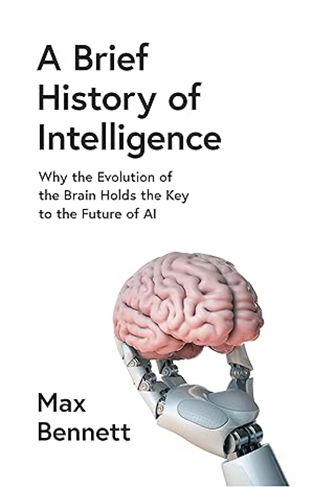
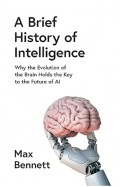

-120x187.jpg?q6)







